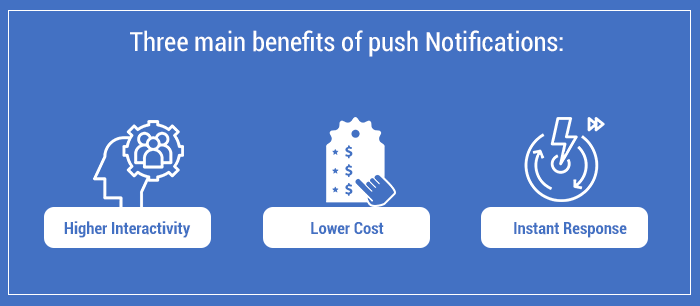This article explores the importance of push notifications in mobile app engagement. The piece delves into the benefits of push notifications for businesses and app developers, how they can improve user engagement and retention, and what strategies can be used to optimize them. Additionally, the article will discuss the potential drawbacks and pitfalls of push notifications and how to avoid them.
The mobile app ecosystem has grown rapidly over the past decade, with millions of apps available in app stores. The competition to capture users’ attention is intense, and it is not enough to create a fantastic app; you must also engage users effectively.
Push Technology is an essential tool for any app that aims to engage and retain its user base. These notifications are messages that appear on a user’s device, even when the app is not open, and can include information about promotions, new features, and personalized content.
Push notifications can be a double-edged sword, as they can be a powerful tool for engagement, but they can also become a nuisance if overused or irrelevant. This article will explore the role of push notifications in mobile app engagement, their benefits and drawbacks, and how to optimize them for the best possible results.
Benefits of Push Notifications:
Push notifications are a valuable tool for businesses and app developers to engage and retain users.

Here are some of the benefits of push notifications:
- Increase User Engagement: Push technology can increase user engagement by sending timely and relevant messages to users. These notifications can include reminders, personalized content, and alerts that keep users engaged with the app.
- Improve Retention Rates: Push technology can also improve retention rates by reminding users about the app and its features. These reminders can encourage users to return to the app and continue using it.
- Drive App Usage: Push technology can drive app usage by promoting new features, products, or services. Notifying users about these updates makes them more likely to try them out and use them.
- Boost Conversions: Push Technology can boost conversions by sending personalized messages to users. These messages can include discounts, promotions, and special offers that encourage users to make purchases.
- Enhance User Experience: Push Technology can also enhance the user experience by providing personalized content and notifications that are relevant to the user’s interests and preferences.
Best Practices for Push Notifications:
While push Technology can be a powerful tool for engagement, it is essential to use them correctly to avoid alienating users.

Here are some best practices for push notifications:
- Personalization: Personalization is key to successful push Technology. By sending personalized messages based on user behavior and preferences, you can improve engagement rates and retention rates.
- Timing: Timing is crucial when it comes to pushing Technology. Sending notifications at the wrong time can be annoying and cause users to turn off notifications or even uninstall the app. Send notifications at the right time, when users are most likely to engage with the app.
- Relevance: Push notifications must be relevant to the user to be effective. Sending irrelevant messages can be frustrating and cause users to unsubscribe from notifications or even uninstall the app. Use user data to send relevant messages to users.
- Frequency: The frequency of push Technology is important. Sending too many notifications can be overwhelming while sending too few can be ineffective. Find the right balance by testing different frequencies and analyzing user behavior.
- Opt-In: Make push Technology opt-in to avoid annoying users who do not want to receive them. This also allows users to select the types of messages they want to receive.
Potential Drawbacks of Push Notifications:
Push notifications have some potential drawbacks that app developers must be aware of:
- Overuse: Overuse of push Technology can cause users to turn off notifications or even uninstall the app. Make sure to use notifications judiciously to avoid overwhelming users.
- Irrelevance: Sending irrelevant push Technology can frustrate users and cause them to unsubscribe from notifications or uninstall the app. Make sure to use user data to send relevant messages to users.
- Distraction: Push Technology can be distracting and interruptive, especially if sent at the wrong time. Ensure that push notifications do not interfere with users’ daily activities or routines.
- Privacy Concerns: Push notifications require access to user data, including location, personal information, and device data. App developers must ensure that they handle this data securely and transparently to avoid privacy concerns.
- Negative User Experience: If push notifications are not used correctly, they can lead to a negative user experience. This can cause users to uninstall the app or leave negative reviews.

source: Google Images
Conclusion:
Push Technology is a powerful tool for engaging and retaining app users. Sending timely and relevant messages to users, businesses, and app developers can improve engagement rates, retention rates, and conversions. However, it is crucial to use push notifications judiciously to avoid overuse, irrelevance, and distraction.
By following best practices and analyzing user behavior, app developers can optimize push notifications for the best possible results. Ultimately, push technology should enhance the user experience and provide value to users, improving their engagement with the app and their satisfaction with the overall experience.



















